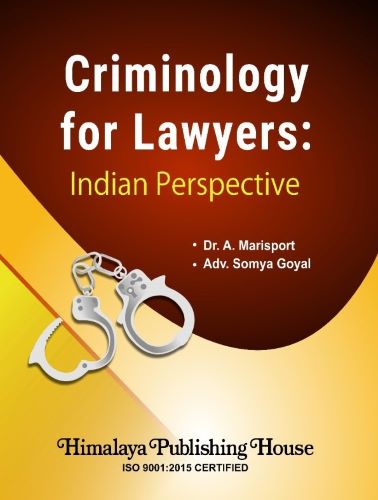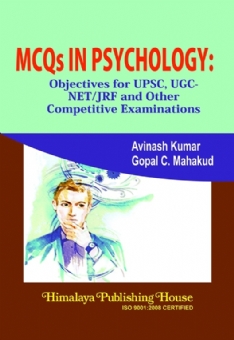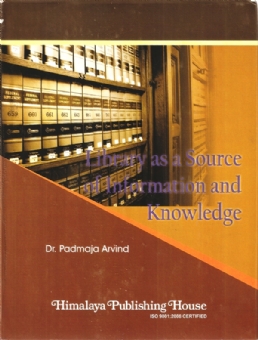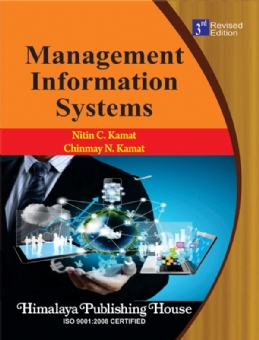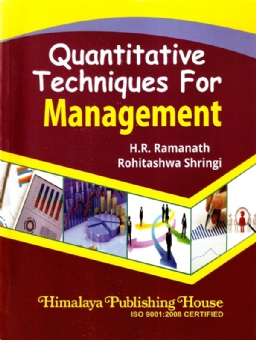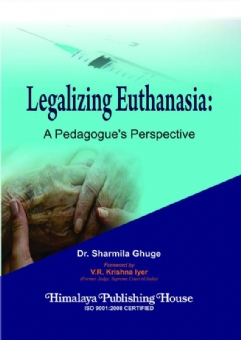The intricate relationship between crime, law, and society has always fascinated us—not only as an advocate but also as a concerned citizen deeply invested in justice and reform. This book is born out of that fascination, combined with years of observing, studying, teaching and working within the Indian legal system. This book attempts to bridge the academic and the practical—exploring criminological concepts through the lens of Indian jurisprudence and lived legal experience. Hope this work encourages critical thinking, sparks dialogue, and contributes in some small way to the ongoing pursuit of a more equitable legal system.
Contents –
Chapter 1: THE CONCEPT OF CRIME
Definition of Crime Beyond Legal Definition
Roscoe Pound
Raffaele Garofalo
George Wald
Richard Quinney’s Elucidation
Historical Aspects
The Concept of Security
Chapter 2: CRIMINOLOGY
Key Aspects of Criminology
Whether Criminology is a Science?
Whether Criminology itself is a Discipline?
History of Criminology
Chapter 3: CLASSICIAL THEORIES
Introduction
Pre-classical Era
Justice Theory
Rational Choice Theory
Jeremy Bentham
Neoclassical
Routine Activities Theory
Consumer Crimes
Three Strike Laws
Incapicitation
Deterrence and Death Penalty
Social Process Theory
Sutherland’s Differential Association Theory
Differential Reinforcement Theory and Differential Identification Theory
Cognitive Social Learning Theory
Neutralisation Theory
Positive Neutralisation
William Calley
Learning Rationalisations as Motives
Matza, Syke’s—Juvenile Delinquency
Neutralisations and Rationalisations of Digital Piracy: A Qualitative
Analysis of University Students
Denial of Injury
Denial of Victim
Bandura’s Moral Disengagement Theory
Policy Implications of Neutralisation and Moral Disengagement Theory
Chapter 4: BIOLOGICAL THEORIES
Relation between Criminology and Biology
Born to be a Criminal
Cesare Lombroso Theory
Y Chromosome Theory or XYY Male Theory
Cesare’s Theory of Inborn Criminal
Enrico Ferri
Raffaele Garofalo
William Sheldon Theory
Twin Studies
Adoption Studies
Barry Hutchings and Sarnoff Mednick
Criticism
Lee Ellis
Ellis’s Cluster of Bio-criminological Theories
RK Theory
Biosocial Criminology: A Developmental Explanation of Crime
E.O. Wilson —Sociobiology
Krimsky and Simoncelli
Calloway
Chromosomes, Nervous System, Attention Deficit Disorder, Hormones and the Brain
Miller and Sarbin
Flower
Autonomic Nervous System
ADD and ADHD (Silva and Moffitt)
Visser, Cole, and Daniels
Johnson and Kercher
Elements that Require Examination Pertaining to the Correlation between Hormones and Criminal Behaviour
Recent Developments in the Domain of Biosocial Criminology
William Holmes
Application of Early Biological Theories in India
Criticism
Ankush Maruti Shinde vs. State of Maharashtra 2019
The Neuroandrogenic Evolution Theory
Cheater Theory
Criticisms
Conclusion
Chapter 5: PSYCHOLOGICAL THEORIES
Introduction
Abnormal Minds
Jodie Foster
Hitler’s Case
Attachment Theory
Frustration-Aggression Theory
Trait Based Personality Theory
Characteristics of Antisocial Personality Disorder
Eysenck
Dopamine and Serotonin
Contribution by Trait Based Personality Theorists
Policy Implications
Behavioural Learning Theory
Social Learning and Modeling Theory
Cognitive Theories
Ecological Psychology
Evolutionary Psychology
Chapter 6: SOCIOLOGICAL THEORIES
Introduction
Gottfredson and Hirschi —Theory of Bonding and Social Control
Broken Bond Theory
Failure to Bond Theory
Albert Reiss
Walter Reckless’ Containment Theory
Hirschi’s Social Control Theory
Hirschi and Gottfredson’s Self-Control Theory
Policy Implications of Control Theory
Grasmick’s Characteristics of Low Self-Control
Policy Implications of Control Theory and Self-Control Theory
Limitations
ANOMIE THEORY
Introduction
Durkheim’s Original Concept of Anomie
John Hinckley
Global Anomie: Hidden Consequences of Globalisation
Nikos Passas
Merton’s Instrumental Anomie and Differential Opportunity Structures
Robert K. Merton
Criticisms of Merton’s Version of Strain Theory
Albert Cohen: Status Frustration and Delinquent Subcultures
Criticisms of Traditional Strain Theory
Delbert Elliott
Nikos Passas
Agnew’s General (or Revised) Strain Theory
Two Kinds of Strain
Sources of Strain
Policy Implications
Messner and Rosenfeld’s Institutional Anomie Theory
Policy Implications
Global Anomie Theory and Crime
Nikos Passas
Merton’s Instrumental Anomie and Differential Opportunity Structures
Global Anomie Theory and Crime
Policy Implication
Institutions, Anomie, and Violent Crime: Clarifying and Elaborating
Institutional-Anomie Theory
LABELING THEORY
Introduction
Symbolic Interactions Roots of Labeling Theory
Edwin M. Lemert —Primary and Secondary Deviance
Edwin Lemert and Howard Becker
Becker’s Interactionist Theory: Social Reaction and Master Status
Goffman’s Stigma and Total Institutions Theory
Braithwaite’s Reintegrative Shaming
Matsueda’s Informal Negative Labeling and Differential Social Control
Policy Implications
Social Ecology Theory
Chicago Area Project
Robert Park
Social Disorganisation
Shaw and McKay
Limitations of Social Ecological Theory
New Social Ecology Thoeries
Social Ecology, Urban Design, and Environmental Criminology
Critical Ecology
Integrated and Systemic Ecology
Systemic Ecology Policy
Sellin’s Culture Conflict Theory
Gang Studies
Criminal Gangs
Features of Criminal Gangs
Crips and Bloods
Johnny Torrio and Al Capone
Chapter 7: MARXIST AND CONFLICT THEORIES
Introduction
Marx’s Analysis of Capitalist Society
Willem Bonger
Contemporary Radical Criminology
Instrumental Marxism
Structural Marxism
RADICAL THEORY
Introduction
Common Assumptions
Similarities Between Conflict Theory and Radical Theory
CONFLICT THEORY OF CRIMINOLOGY
Introduction
Historical Development
Thorsten Sellin
Max Weber
Weber Class Status and Party
George Simmel
Vold’s Group Conflict Theory
Dahrendorf’s Dialectical Conflict Perspective
Contemporary Conflict Criminology
Austin Turk
Quinney’s Social Reality of Crime
Some Examples of Conflict Theory
Manipur Issue
Naxal Issue
Palestine Issue
Jayarath and Dennis’ Recent Case
Indrani Mukherjee Case
Policy Implications of Conflict Theory
Evaluation of Conflict Theory
Chapter 8: FEMINIST THEORIES
Introduction
Emergence of Feminism
Role of Feminism in Criminology
Males and Females Committing Crime
Gender Disparity
Different Category of Offences
Factors Influencing Crimes
Chesney-Lind Theory
Lombroso’s Criminology Theory of Feminism
Feminism Theories
Women as Serial Killers
Legislative Framework on Gender Consideration
Notion of Women
Focus of Feminist Theories of Criminology
Distinct Features of Feminist Criminology
Kathleen Daly and Meda Chesney-Lind
Jody Miller
Liberal Feminism
Indrani Mukherjee
Reshma Memon and Shabana Memon
Santokh Bhan Jadeja
Phoolan Devi
Kempamma
Renuka Shinde, Seema Gavit and Anjanabai Gavit
Archana Balmukund Sharma
Shashikla Ramesh Patnakar
Cyanide Mallika
Male and Female Sentencing
Sentencing of Women Offenders
Indian Judiciary on Sentencing of Offences Against Women
How Indian Judiciary View an Offence Against Women?
Sentencing of Women Offender
Reasons for Leniency Towards Women Offenders
Pregnancy
Augusta Fairfield Fullam Case
Nalini’s Case
Family Ties
Eleanor Bush
State of H.P vs. Nirmala Devi
Coercion, Duress, and Abuse
Kiranjit Ahluwalia Case
Phoolan Devi
Dominance and Manipulation
Conviction Rate on Offences Against Women
Number of Women Prisoners
Masculinisation and The Emancipation Thesis
Criticism
Radical Feminism
Marxist Feminism
Social Feminism
Hagan’s Power —Control Theory —John Hagan and Colleagues
Conclusion
Robert Agnew
Chapter 9: DISASTER THEORIES
Introduction
Definition of Disaster
Charles Fritz
Allen Barton
Need for Disaster Criminology
Disaster Types
Gill et al.
Phases of Disaster
National Governors Association (NGA)
Killian
Criminological Analysis of Disaster Fear
Crime Connected with Fear
State Responses During Disaster
Impact of Disasters on Society and Crime
Applicable Criminological Theories
Social Disorganisation Theory
Rational Choice Theory
Routine Activity Theory
General Strain Theory
Chapter 10: PANDEMIC THEORIES
Introduction
The Pandemic as an Externality: Criminology as Social Experiment
The Global Pandemic as an Internality: Experimenting with Criminology
Pandemic Crisis and Criminal Justice
Crime Displacement
Lockdown Measures
Public Health Measures
Data Protection Concerns
Sufferings of Vulnerable Community
Crime Pattern in Pandemic
Criminology, Gender and Global Pandemic
Domestic Violence
Crime Committed by the Law Enforcement Agencies
Trafficking of Medical Products
Narrative Criminology and Pandemic
Criminological Theories and Pandemic Dynamics
Various Authors on Pandemic Criminology
Pandemic Criminology: Indian Scenario
Initial Crime Data
Crime in Lockdown
Lessons for Post Pandemic
Chapter 11: CYBER CRIMINOLOGY THEORIES
Introduction
Applying Theories of Criminology and Criminal Justice
Routine Activity Theory
Social Learning Theory
The Space Transition Theory
The Victim Participation Theory
Victims
Criminological Analysis of Orderly System in Indian Police
Statistical Data of Orderlies in India
Recorded Cases of Orderlies Treated by Human Beings
Reasons of Misappropriation
Norms of Difference
A Step Away from an Unfavourable Subject
Neutralisation of Human Deployment in Orderlisms
Judicial Pronouncements
Governments Measures for Abolishing Orderly System in Indian Police
An Orderly System: Disadvantages
Conclusion
Criminological Analysis of Indian Government’s Demonetisation Policy, 2016
Reasons for Introducing the Demonetisation Strategy
Curbing Black Money —Identify the Tax Evaders
Combating Counterfeit Currencies
Combating the Funding of Terrorism
Neutralising the Hardships
Implementation of Demonetisation Scheme
Conclusion

